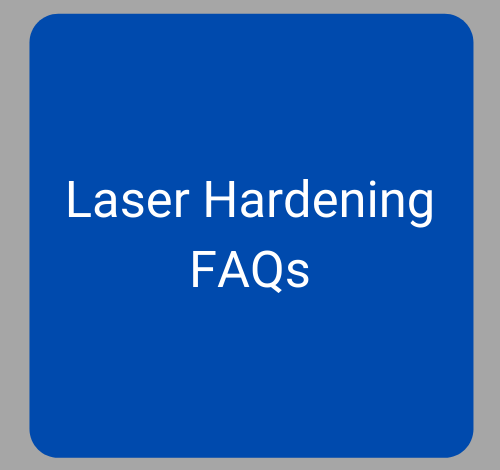Laser hardening is a case hardening process in which a laser beam is used to heat the surface of material in a precisely temperature controlled way. The surface is heated upto just below its melting temperature which causes austenitization. As the laser beam moves away from the heated area, the bulk of material starts cooling the surface very rapidly. During this rapid cooling process the carbon atoms get locked in the material lattice thus producing a very hard martensite phase. This martensite structure is what gives rise to very high hardness in the surface layer of the material.
No, In conventional hardening process the parts have to be quenched either in oil or water. However in laser hardening, the bulk of the material itself acts as a heatsink thus providing “Self Quenching” effect. Hence separate quenching is mostly not required in laser hardening.
Lasers provide very localized and precise heat input during the process and there is no need to heat the entire part as is done in conventional hardening, hence it has several advantages , some of which are mentioned below :
- Much less/nil distortion and very very less/nil reworking, you can practically perform laser hardening on the finished part or as the last step in your production cycle.
- One can get benefits of both, a very hard surface layer as well as underlying toughness of the bulk material due to this process. Also laser hardened parts are less prone to cracking as compared to conventionally hardened parts.
- Small parts and complex geometries can be laser hardened and this opens tremendous opportunities to harden parts which are very difficult to harden through conventional processes.
- Being mostly a single step process most of the post processing steps (like hard milling and grinding) are not required in laser hardening hence this increases productivity and throughput and saves costs.
Laser hardening is suitable for hardenable steels, cast iron etc having at least 0.2% carbon content. However, the maximum achievable hardness is dependent on carbon content, alloying elements as well as part geometries in some cases.
Dependending on the material properties its maximum hardness can be achieved. The hardened layer case depth ranges from 0.1-1.5 mm and in some cases 2 mm for certain materials.
Yes, generally it is possible to laser harden already hardened material.
High power Diode lasers, due to their uniform intensity distribution (“Top Hat” beam shape) profile, and excellent wall plug efficiency are best suitable for the process. Also the spot size of the diode laser beam can be adapted to dimensions of the target area to be hardened giving the process very controlled and uniform heat input.
It is ideal for case hardening, where hardening of components with complex geometries is necessary. Also, it has very low thermal distortion, so it does not require post process treatments and gives high precision. Some of the best known applications are in the following areas :
Cutting and bending edges of tools and dies, automotive transmission components, pins , gears, shafts, turbine blades, etc

